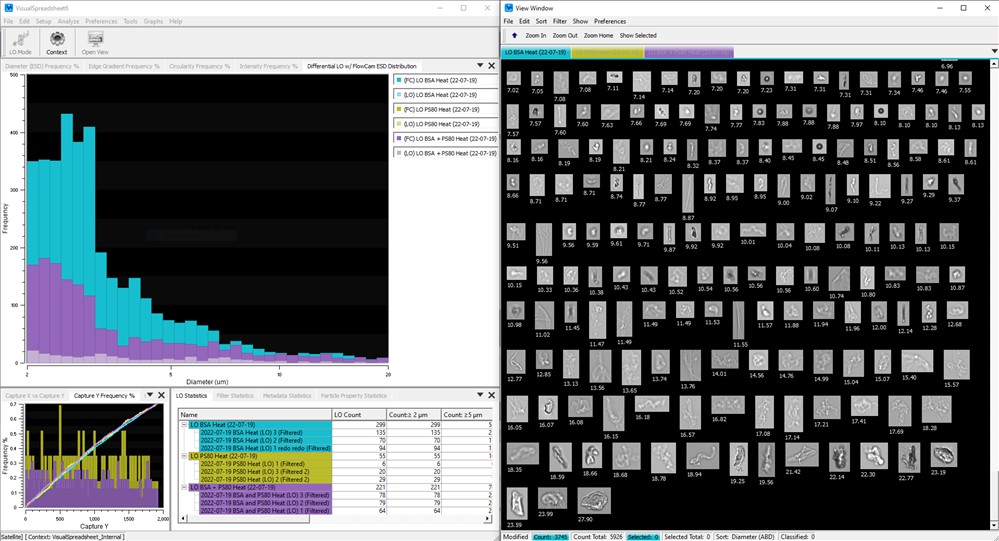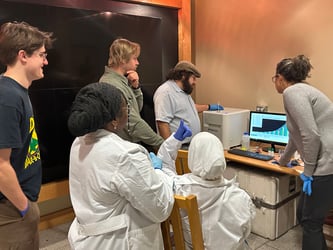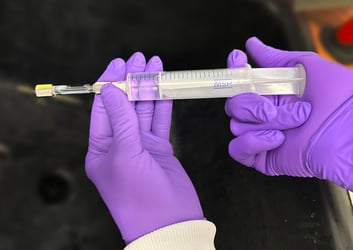Utilizing proper capture settings during image acquisition is crucial to obtaining accurate concentration and sizing data with FlowCam. Distance to nearest neighbor (DNN) is an important capture setting that specifies the distance (in µm) required between two particles for them to be imaged separately. Properly optimizing DNN ensures that only one complete particle is captured per image.
Two common issues arise when sub-optimal distance to nearest neighbor values are used during data collection:
The first is when multiple particles are captured in a single image. This occurs when DNN is set too high for a particular particle type. The image below shows compact and discrete particles at high concentrations; a case in which DNN should be set to 0 or 1 µm.
The second is when a single particle is segmented into multiple images. This occurs when DNN is set too low for a particular particle type and is especially common in samples containing semi-transparent particles like protein aggregates or phytoplankton. For these types of particles, setting DNN between 4-8 µm (depending on concentration and degree of transparency) typically resolves the issue.

A straightforward way to perform method development is to save raw data files and use file processing mode to experiment with different DNN values and determine their effect on particle capture. DNN can be adjusted in the capture tab of the context settings menu. Once you’ve optimized DNN for your particular sample type, the context file can be saved for easy retrieval.











